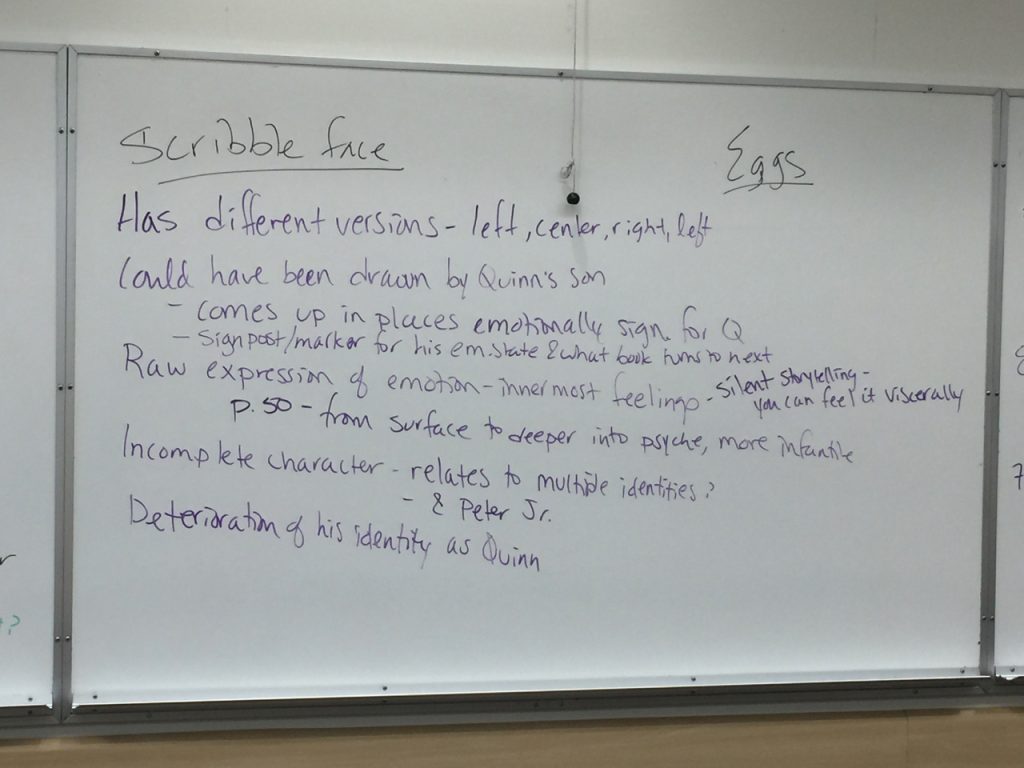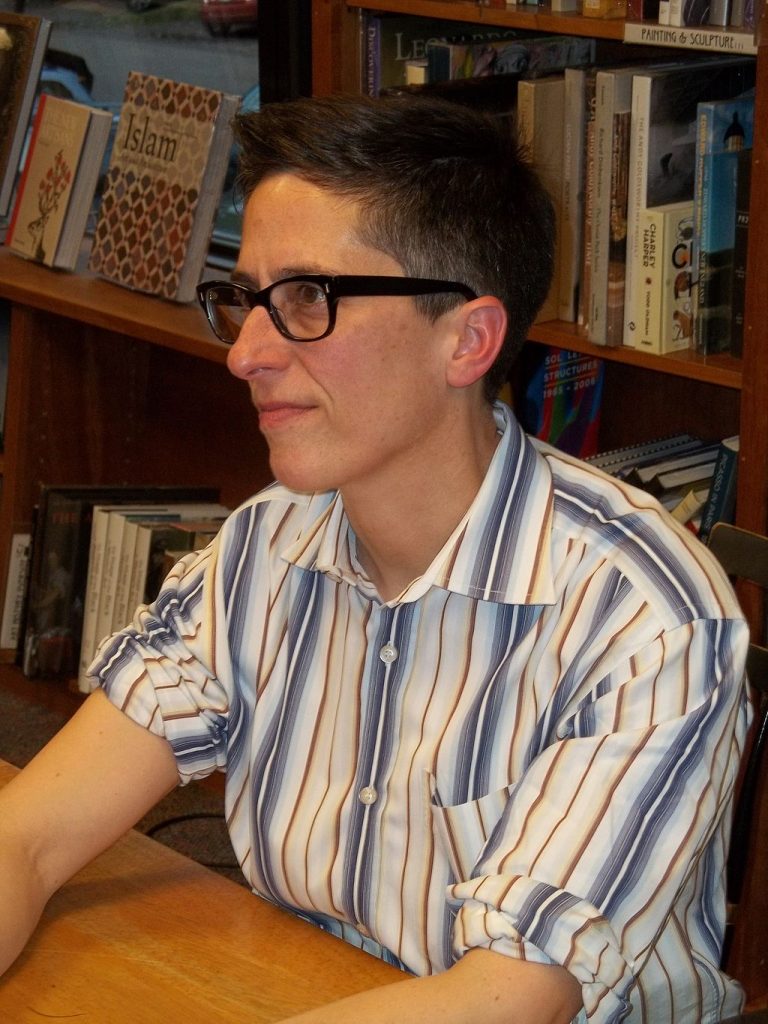I am facilitating a session on teaching dossiers/portfolios for graduate students in the Philosophy department today, April 12, 2017. I created a page on the UBC wiki to house information about the session so it’s available to anyone who wants to see and possibly use it. I am also embedding it here b/c it looks nicer on a WordPress site!
Soon I’ll put it in my teaching and learning portfolio, but for now, here it is!
Here is the direct link to the page on the UBC Wiki.
These are notes and links to resources for the Philosophy department TA training session on teaching dossiers. This session was held April 12, 2017, but this page can be used for future sessions as well if anyone would like!
Objectives for the session
By the end of this session you should be able to:
- Explain some of the important elements of a teaching philosophy statement in the discipline of philosophy
- Explain the main elements you'll put into your teaching dossier, depending on the purpose and audience you're creating it for
You will leave the workshop with:
- An outline of some of the main points you could include in your own teaching philosophy statement
- An outline of elements you may include in your teaching dossier
Elements of a teaching dossier
What kind of dossier you create, and what goes into it, will depend on the purpose and audience for it.
Discussion:
1. For what kinds of purposes might one create a teaching dossier or portfolio? Who would be the audiences for these?
- Write on board purposes we come up with
There is space on one of the worksheets handed out in the session for notes on these things: File:TchgDossier-TAtraining-Worksheets-April2017.pdf
notes from session in April 2017 on the above
- job applications
- for students, to see information about you as a teacher
- for feedback from others
- for reflection on your own teaching
2. How does one demonstrate effective teaching? What evidence could be used to show it?
- List on board
- Then say which sort of portfolio each kind of evidence might go into, from number 1, above)
notes from session in April 2017 on the above
- For job applications
- Teaching statement
- Teaching experience: describe courses and responsibilities in each, briefly
- Professional development activities (e.g., workshops on teaching and learning you've taken)
- Sample course materials (e.g., syllabi, assignments, advice for writing)
- List of courses you are prepared to teach
- Evidence of Teaching Effectiveness
- student evaluations (be sure to include representative sample of comments, including critical ones; can briefly explain how those helped you reflect on & improve your teaching if applicable)
- student letters or emails thanking you for the course, or solicited student letters for things like teaching awards
- evidence of what your students have been able to do on the basis of your course (e.g., did you help a student publish a paper in an undergrad journal that they had written in your course?)
- peer reviews of teaching--by profs, by graduate student peers (informal; CTLT has a program that organizes such peer reviews)
- teaching awards or other recognition
- professional development workshops you've facilitated
- conference presentations about teaching & learning
Collect evidence as you go through your graduate study!
- Keep many documents: syllabi, assignments you've created, course evals, emails from students, notes or slides you have from giving guest lectures or running discussion groups, notes from PD workshops...what else?
- These things may not all go into your dossier but they are useful for reflecting on what you've done as you craft your dossier, even if they don't go in.
Some online examples of dossiers
- Joanne Fox – http://www.joannealisonfox.com/
- Rebecca Taylor – https://rebeccalynntaylor.wordpress.com/
- Shona Ellis - http://blogs.ubc.ca/shonaellis/
Philosophy dossiers
- Melissa Jacquart: http://melissajacquart.com/ (three sections under "teaching" tab)
- Christina Hendricks: http://chendricks.org/portfolio
- a few shown on paper in the session
For teaching dossiers related to academic job applications in philosophy, you could also ask the Philosophy department Placement Officer for samples from recent graduate students who have agreed to provide their dossiers for this purpose.
Teaching philosophy statement
Activity
Groups read teaching philosophy statements from recent graduate students in philosophy. Write down:
- what you think is particularly effective
- whether you think anything might be improved
- whether there is anything else you would like to know about this person's teaching if you were reading this for a job application
Discussion
Brainstorm and write on board what you think should go into a teaching philosophy statement, focusing in particular on the context of teaching philosophy courses. You can take notes on the worksheets for this session: File:TchgDossier-TAtraining-Worksheets-April2017.pdf
General suggestions for teaching philosophy statements
Here are some general suggestions gleaned from my own experience reading teaching philosophy statements and from reading a few online sources.
- Keep it concise: Most teaching philosophy statements are 1-2 pages. This makes doing all of the following challenging!
- Get feedback: Write a draft, get feedback from others (including peers and also those with experience in reading or writing effective teaching statements), write a new draft, get more feedback if others are willing. Repeat.
- Be specific: Don't stop at sweeping statements about what you hope to accomplish in your teaching but give concrete examples of what you have done or plan to do. E.g., instead of just saying you include both lecture and classroom activities during class time, give one or two specific examples of the classroom activities and why you use those.
- Show evidence of reflection: Explain your rationale for what you do in your teaching; if your teaching practice is based in any research on teaching and learning, you could include citations to that research (optional).
- Don't forget student learning: This is a "teaching philosophy statement," but it's good to also talk about student learning. What are your goals for student learning and how do you try to achieve them? (more on this below). How have students reacted to what you are doing in the classroom? Has their work improved through a particular intervention?
- Avoid jargon: Your audience may not know buzzwords or jargon related to teaching and learning, so it's better to explain what you are doing rather than rely on terms the audience may not know (this is audience-dependent, of course)
- Avoid nice-sounding but empty terms and phrases (or fill them out): Everyone wants their students to be critical thinkers; don't stop at saying that. If you want to include discussion of that, explain what it means to you and how you try to instill that skill/habit in students.
- Ground your statement in your discipline: Your teaching philosophy statement shouldn't be interchangeable with that of someone in another discipline; think about what you do that is specific to teaching philosophy courses, what you try to accomplish in those.That will help you avoid the empty phrases discussed above.
- Make it memorable: Here is a nice piece of advice from a Cornell University website on teaching philosophy statements: "The search committee is seeing many of these documents—What is going to set you apart? What will they remember? Your teaching philosophy will come to life if you create a vivid portrait of yourself as a person who is intentional about teaching practices and committed to your career."
- You can set your statement apart and make it more memorably by including specifics of what you do and why, allowing others to visualize your teaching practice beyond platitudes.
Online resources for teaching philosophy statements
The Center for Research on Learning and Teaching at the University of Michigan
They have a helpful short paper with advice on writing teaching philosophy statements that is based on survey responses from search committee chairs, research on best practices in teaching and learning, and the authors' own experiences reading teaching philosophy statements.
They suggest a few categories of things you could include in your statement:
- Goals for student learning
- Consider: how do you hope students will be different after taking your class? What can they do, what sorts of skills and attitudes will that have if your goals are met?
- Enactment of goals
- What sorts of activities do students do in your class that are aimed at reaching the above goals?
- Assessment of goals
- How do you determine if the goals are met? What kinds of assessments do you use, and how are they related to your goals for student learning?
- Creating an inclusive learning environment (this might be covered in a separate diversity statement, if you have one)
- Instead of having a standalone "diversity paragraph" in the statement, consider including diversity considerations in several aspects of the statement
They also have a rubric you could use to evaluate the quality of your teaching philosophy statement in these categories.
They emphasize ensuring you have an alignment between goals, activities to enact these goals, and assessments--this not only unifies your teaching statement, but is best practice for course design as well!
Article by Kearns and Subino Sullivan (2011)
This article makes similar suggestions as to elements of the dossier, saying it would be useful to include learning goals, teaching methods aimed at achieving those, and assessment of student learning. They also add another category you could include:
- Assessment of teaching: "What are your strengths as a teacher? How will you improve students' achievement of [your] learning goals? What aspects of your teaching are you working on right now?" (p. 139).
They also provide a useful set of examples for how to structure a teaching statement. There are multiple formats you might choose, such as:
- Start with a paragraph about the goals you have for student learning, then give specific examples of activities and assessments linked to these goals in the next 2-3 paragraphs, then end with a paragraph in which you "analyze your overall teaching effectiveness and propose future teaching developments" (p. 140).
- Include as part of your statement a "great moment" you have had in teaching--what has worked well and why? How do you know it worked? How does it connect to your teaching goals?
- You could also include a "not-so-great moment" as well as a great moment, comparing the two and saying what you've learned.
- Structure your statement around a story, "a pivotal moment, either in your own learning or in your teaching" (140). Then connect the rest of the statement to that event in some way, being sure to still talk about teaching goals, activities and assessments.
- Start with a metaphor about teaching and learning, and then structure the rest of the statement around that metaphor.
Outlining your dossier
Start with your statement of teaching philosophy, and then build your evidence around that in order to have a coherent dossier.
Starting a teaching philosophy statement
Activity:
- Write down 2-3 goals you have for student learning when you teach philosophy courses. These could be different for different courses, so choose 1-2 courses to focus on. They can be short phrases.
- Put these at the top of sheets of paper (or one per side of a piece of paper)
- Under each goal, brainstorm course activities and assessments you do or could do to help students achieve the goal.
Put these notes on the worksheets for the session: File:TchgDossier-TAtraining-Worksheets-April2017.pdf
If you want to work on your teaching statement outside the workshop, you could also consider brainstorming:
- Write down a "great moment" in your teaching so far, and a "not-so-great moment." Why were these great and not-so-great? What did you learn from the latter? How could you connect those to teaching goals?
- Think about an excellent teacher you have had. What did they do that impacted your learning effectively? What values or goals for your own teaching can you connect to that experience?
- Is there a story about a pivotal moment in your teaching or learning experience you could use to start your statement and connect other parts of your statement to? How could you connect it to teaching goals?
Outlining your dossier
Activity: Outline which elements you'd like to include in your dossier, based on:
- What we brainstormed on the board earlier
- What you are including in your teaching statement--how could your dossier connect to what you said in your teaching statement?
Put these notes on the worksheets for the session: File:TchgDossier-TAtraining-Worksheets-April2017.pdf
Resources
Here are some web pages linked to above and also a few others.
Teaching Philosophy Statements
- O'Neal, C. et al. (2007). Writing a statement of teaching philosophy for the academic job search. University of Michigan Center for Research on Teaching and Learning.
- Rubric for evaluating teaching statements using the categories they suggest for such statements
- Kearns, K.D. and Subino Sullivan, C. (2011). Resources and practices to help graduate students and postdoctoral fellows write statements of teaching philosophy. Advances in Physiology Education 35, 136-145. Open access.
- Ohio State University Centre for the Advancement of Teaching page on Teaching Philosophy Statements.
- Vanderbilt University Center for Teaching web page on teaching statements
- Cornell University Graduate School web page on teaching statements
- Gabriella Montell, "How to Write a Statement of Teaching Philosophy" (2003), from the Chronicle of Higher Education
Diversity Statements
- Golash-Boza (2016). The Effective Diversity Statement. Inside Higher Ed website.
- University of California San Diego information on diversity statements. From the UCSD Center for Faculty Diversity and Inclusion.
- Resources from a workshop on writing diversity statements from University of California, Davis.
Teaching Portfolios
- UBC Centre for Teaching, Learning and Technology web page on teaching portfolios
- Dusquene University web page on teaching portfolios
- Western University Teaching Support Centre page on teaching portfolios
- University of Saskatchewan Centre for Teaching and Learning page on teaching portfolios
Philosophy Specific resources
- Melissa Jacquart has some useful slides on teaching dossiers & teaching philosophy statements for philosophy, on her website. Here is a PDF of the slides, which are under Teaching -> Resources for Instructors on her site.


